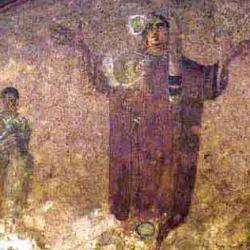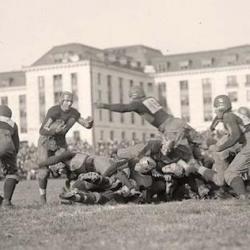In her book on Common Prayer, Ramie Targoff claims that “What emerges in the aftermath of the Reformation is less a triumphant embrace of the individual’s private and individual self than a concerted effort to shape the otherwise uncontrollable and unreliable internal sphere through common acts of devotion” (6). Some early English reformers were afraid of hypocrisy, the “disjunction between the worshipper’s mind and body” but “by the seventeenth century, however, the concerns raised by early reformers . . . were met with increasingly elaborate accounts of the involuntary correspondence between external and internal states of devotion” (10).
This development runs against the trajectory of Catholic piety which, according to Targoff, did not promote “a shared and collective liturgical language,” but rather encouraged “the worshippers to perform their own private devotions during the priest’s service” (14). According to some Catholic writers, “there is no benefit whatsoever to connecting the priest’s and the laity’s devotions” (16), Protestants argued the opposite: “For these sixteenth-century reformers, the danger of the laity’s ‘lewd and perverse imaginings,’ . . . can be contained only by controlling the worshippers’ attention and supplying their prayers. In this Protestant formulation, the church liturgy becomes the best mechanism to subsume personal and idiosyncratic worship within a collective devotional performance” (16).
Targoff argues that the 1552 Book of Common prayer displays “increasingly collective model of public prayer” (28) that focus on the “harmony of social relations” not the individual’s piety. In the liturgical life of Common Prayer “all distinctions among the various kinds of communicants are with a single stroke collapsed; within this utterance, even the priest becomes interchangeable with the lay worshiper” (33). The difference is evident in the different ways Catholic and Protestant conceived of private worship at home: “Whereas the Catholic Primers were largely oriented toward providing lay worshippers with devotional texts for use either at home or during public liturgical services, this Protestant version sought to transform the public liturgy into a complete text for domestic use; instead of the church supplying a space for private worship, the home was now imagined as an additional site for common prayer” (34).
According to Targoff, the ironic result is that the non-conformists who attacked the prayer book as Papist advocated a piety that was closer to Roman Catholicism: “Elizabethan non-conformists shared with the Catholic Church an interest in sustaining the difference between the utterances of the priest and the congregation, a difference that the English reformers had sought to dismantle. However, whereas the Catholics emphasized the priest’s unique role in relation to administering the sacraments, these Protestants focused their attention on the minister’s chosen status as preached. . . . English non-conformists sought above all else to elevate the sermon to the central act of public worship” (41). Sacramental clericalism was replaced by oratorical clericalism.














